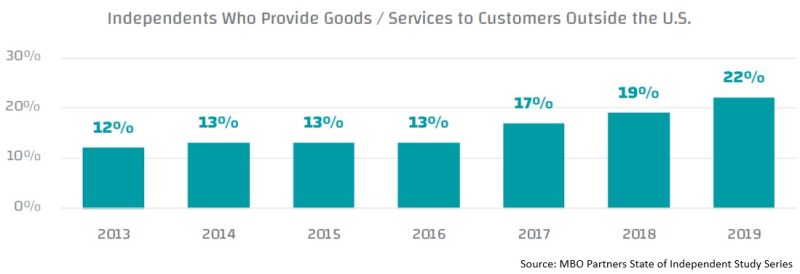Despite trade wars, tariffs, and the erection of other barriers to cross-border commerce, independent workers, freelancers and other types of single-owner small businesses are increasingly finding customers outside U.S. borders. Steve King, a partner in Emergent Research and a regular contributor to SmallBusiness.com, explains why.
As the MBO Partners State of Independence study chart below shows that in 2019, 22% of full-time independent workers said they provided goods or services to customers outside the U.S.
This is up from 19% in 2018. And up from just 12% in 2012.

The increase in exports is being driven by several factors
- Online marketplaces have made it much easier to find and service customers outside of the U.S. They also simplify and facilitate transactions and payments.
- Collaboration software has reached the level where communicating with remote customers is easy and efficient. This has greatly increased the ability of service providers to serve customers outside of the U.S.
- Improvements in outsourced logistics services have reduced the costs and greatly simplified the process of delivering physical products to pretty much any global destination.
What this means regarding the future
The trends that are driving the growth of exports by full-time independent workers will continue — and even grow stronger. This means that export activity by independent workers will also continue to grow.
GettyImages
